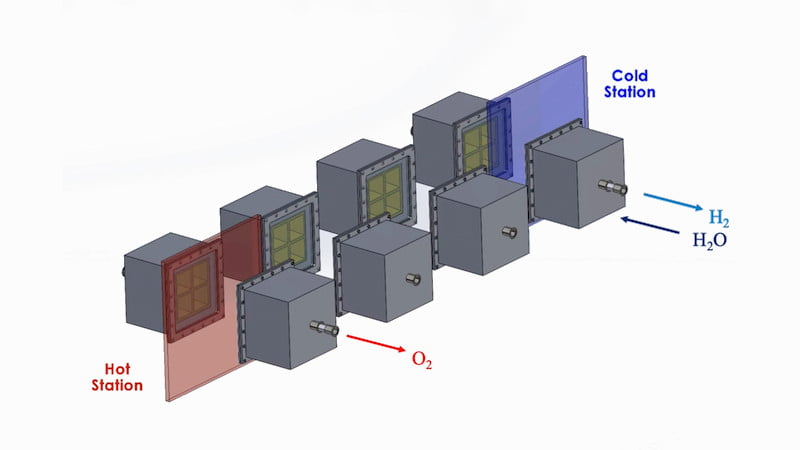
Researchers at the Massachusetts Institute of Technology (MIT) have developed a sustainable method for producing hydrogen. A solar reactor uses 40 percent solar energy for production.
In addition to the use of wind, hydropower and solar energy, one element could develop into an important pillar of the energy transition: hydrogen. Especially in energy-hungry sectors such as steel production, switching to green electricity is rarely profitable.
At the same time, it requires an energy source for large vehicles. The use of battery technology for cars and hydrogen for trucks, trains and planes is becoming increasingly likely in the future. But how can hydrogen be produced as sustainably and on a large scale as possible?
A team from the Massachusetts Institute of Technology (MIT) has now developed a solution. Their new solar reactor system can produce hydrogen directly from water and solar heat.
Hydrogen from solar reactor is based on heat from the sun
So far, the use of so-called solar thermochemical hydrogen has been rare. The conversion of sunlight to produce the element was just seven percent. With their solution, the MIT team wants to use up to 40 percent of the incident heat to produce green hydrogen.
The researchers are even going so far as to say that a kilo of hydrogen should only cost one US dollar by 2030. The price is currently around four to six euros per kilogram, provided solar or wind energy is used. A solar heat source provides the necessary energy, and the reactor then splits the water into hydrogen and oxygen.
Approach still presents some challenges
The water evaporates and comes into contact with a metal. This absorbs the oxygen from the steam and oxidizes (“rusts”). What remains is pure hydrogen, which can then be passed on to tanks. After cooling, the metal is then available for another cycle.
But there are some challenges. The metal needs a vacuum in order to be able to efficiently remove rust again after the process. Storing heat is also still a problem. The reactor sometimes has temperatures of over 1,000 degrees Celsius. In the next step, the team wants to build a prototype to test the system in practice.
Also interesting:
Source: https://www.basicthinking.de/blog/2023/10/23/wasserstoff-solar-reaktor/


